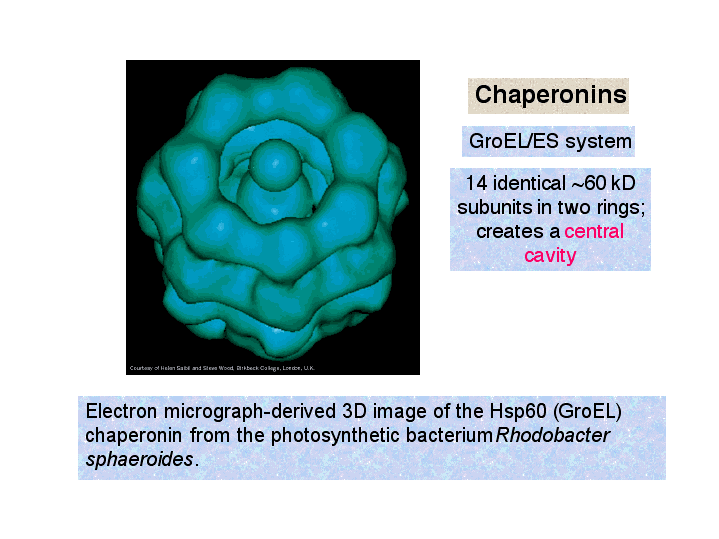

Type II chaperonins are found in the cytoplasm of eukaryotes and in the archaebacterial micro-organisms. Its homologs are Cpn60/Cpn20 in chloroplasts, and mtHsp60/mtHsp10 in mitochondrion ( Cheng et al., 1989 Hayer-Hartl et al., 1995 Dickson et al., 2000). The well-studied Type I chaperonin is known as the GroEL-GroES system in Escherichia coli. They require the assistance of the co-chaperonin i.e., Hsp10, which acts as a cap on the ring. Type I chaperonins are found in the cytoplasm of prokaryotes and in the mitochondrion and chloroplast of eukaryotes. Chaperonins can be further sub-classified into two groups on the basis of requirement of co-chaperonins and their cellular location. The 60 kDa chaperones form large oligomeric rings, and are also referred to as the chaperonins.

This review focuses on Hsp60 class of molecular chaperones, highlighting Hsp60 with atypical structure and function. Much of our understanding on the mechanisms of chaperone-assisted protein folding has been derived from work on Hsp60 and Hsp70 families of chaperones. This type of classification holds true with few exceptions ( Richter et al., 2010 Kim et al., 2013). The chaperones are also classified based on their mode of action into: (a) Foldases, Chaperones that assist refolding of unfolded proteins by using ATP, e.g., Hsp70 and Hsp60, (b) Holdases, Chaperones that bind folding intermediates and prevent aggregation, e.g., sHsp and Hsp40, and (c) Disaggregases, Chaperones which actively disaggregate the harmful protein aggregates, which might lead to their small fragments, e.g., members of AAA + ATPase superfamily and Hsp100. These proteins are classified according to their molecular weight into five major families: (a) Hsp100 family, (b) Hsp90 family, (c) Hsp70 family, (d) Hsp60 family, and (e) small heat shock protein family (sHsp) ( Bohen et al., 1995 Schirmer et al., 1996 Bukau and Horwich, 1998). Apart from heat shock, other stress condition such as carbon, nitrogen, or phosphate limiting conditions were also known to induce molecular chaperones. Proteins reported to have chaperone activity were initially discovered as those overexpressed during heat shock and hence were named as the heat shock proteins (Hsp). These data show that, in contrast to prevailing models, target proteins can maintain, and possibly acquire, significant native-like structure while chaperonin-bound.Molecular chaperones comprise of a wide range of proteins playing key roles in cellular homeostasis and are responsible for assisting in protein folding, assembly of multimeric proteins, translocation of proteins within and across cell, degradation of unwanted, or misfolded proteins during normal cellular processes and stabilization of proteins by preventing aggregation and assisting in refolding under stress conditions ( Lindquist, 1986 Lindquist and Craig, 1988). We present evidence that these intermediates can be generated without the target protein leaving c-cpn.

This results in the accumulation of folding intermediates which are chaperonin-bound, stable, and quasi-native in that they bind GTP nonexchangeably. Here we show that the cycling of alpha-tubulin by cytosolic chaperonin (c-cpn) can be uncoupled from the action of cofactors required to complete the folding reaction. The fact that target proteins are released from and rebind to different chaperonin molecules ("cycling") during a folding reaction suggests that chaperonins function by unfolding aberrantly folded molecules, allowing them multiple opportunities to reach the native state in bulk solution. Quasi-native chaperonin-bound intermediates in facilitated protein folding.Ĭhaperonins are known to facilitate protein folding, but their mechanism of action is not well understood.


 0 kommentar(er)
0 kommentar(er)
